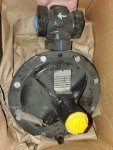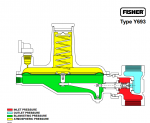Most of us run our diesel generators a couple hours every quarter....many run them every month. This is generator/engine maintenance. You heat things up to operating temperature and drive out any moisture collected in the system. And you can catch any leaks or problems on a nice sunny day that you don't want to crop up when you need the generator to run. I keep my fuel tank full......or close to it. This is about reducing the volume of moisture containing air that can enter the fuel tank. I've got a 50 gallon tank of treated diesel that I will empty for use in my truck every 3 years. The vent on this tank has a hygroscopic filter on it to reduce moisture intake from tank expansion and contraction. And it is an emergency tank for use when a hurricane makes things uncomfortable for me.
Argon blanket might help your situation but if your tank is not full you will still have a large volume of moisture containing air in the tank. When it gets cold this air will dump the moisture onto the sides of the tank as condensate and it might flow down the tank walls, through the Argon blanket, and into the fuel. Argon is a problem if you have ANY way for the argon gas to get into the boat's bilge or living quarters: your boat's living space is a confined space that will capture 'fugitive' argon. Use a fan to blow out the stale air before you enter the vessel at the beginning of the season.
I would run my engine for 2 hours at the beginning and the end of each boating season. I'm talking 2 hours straight....not just motoring out of a marina for 20 minutes. An engine needs to get warmed up to operating temperature.
I would go with the full tank of fuel during winter storage. Replenishment of ~1/3 of your 28 gallon tank each year with treated fuel should keep the fuel fresh.
The attached site suggests polishing fuel as a way to keep it clean when you run into bio problems.
Since 1974, Practical Sailor’s independent testing has taken the guesswork out of boat and gear buying.

www.practical-sailor.com





